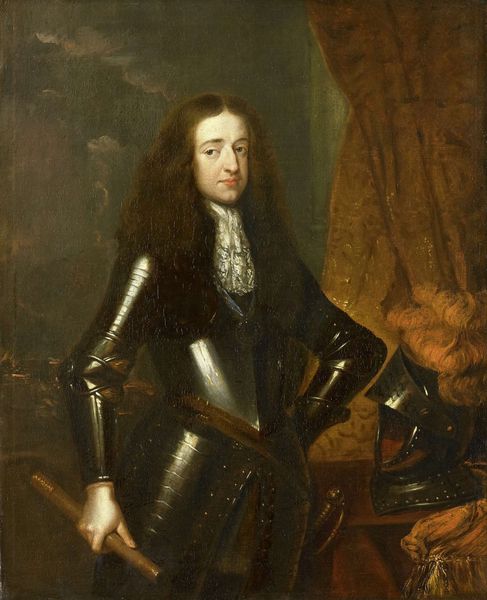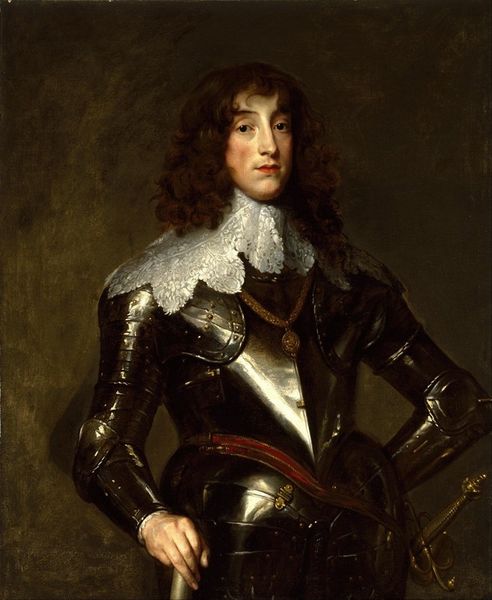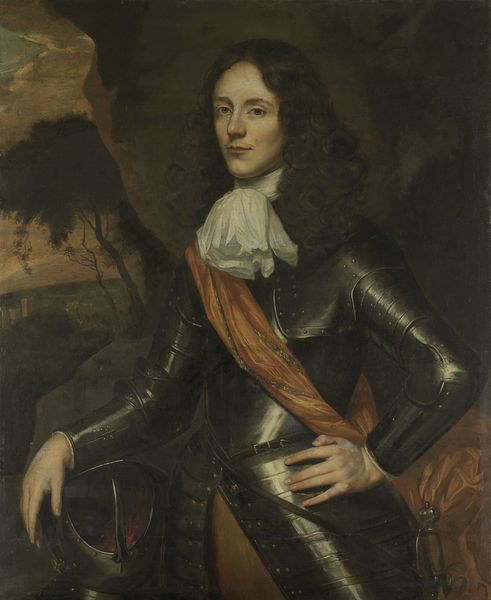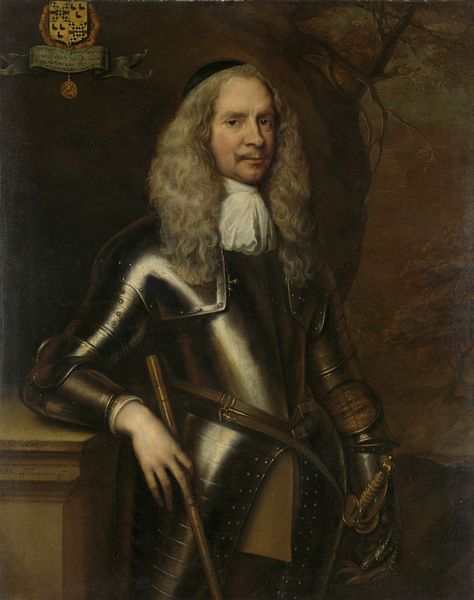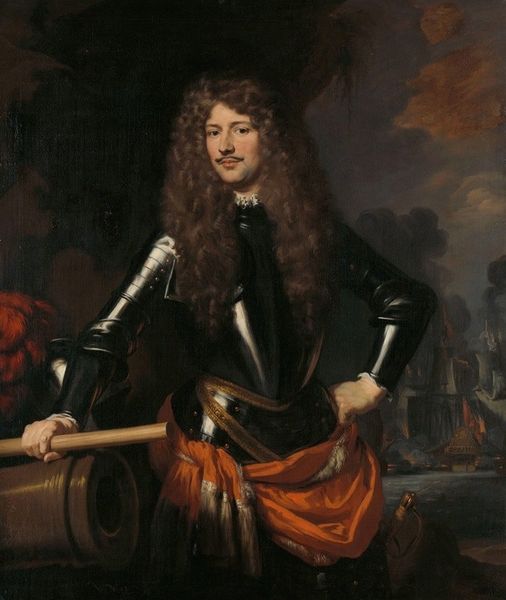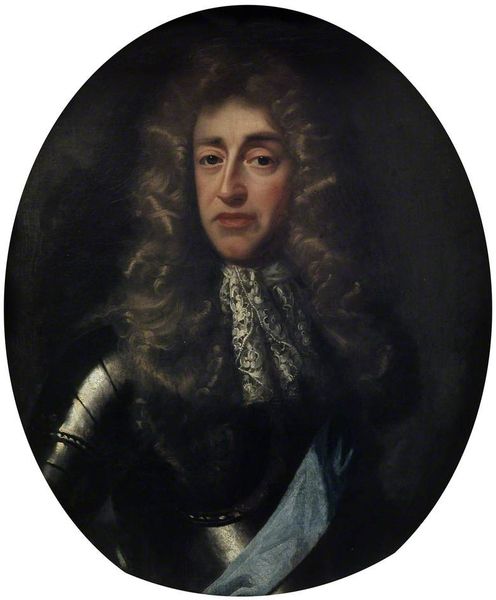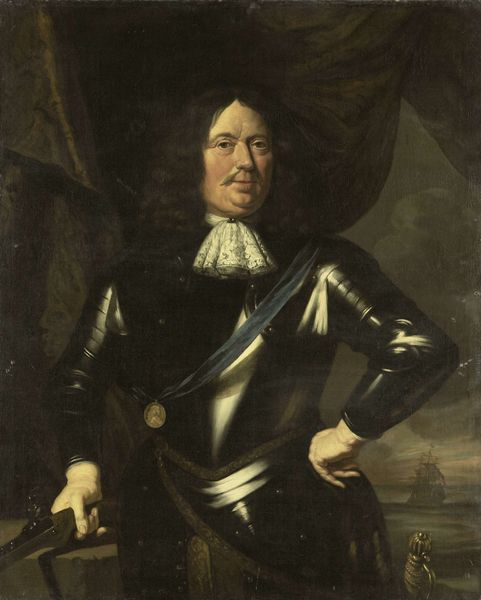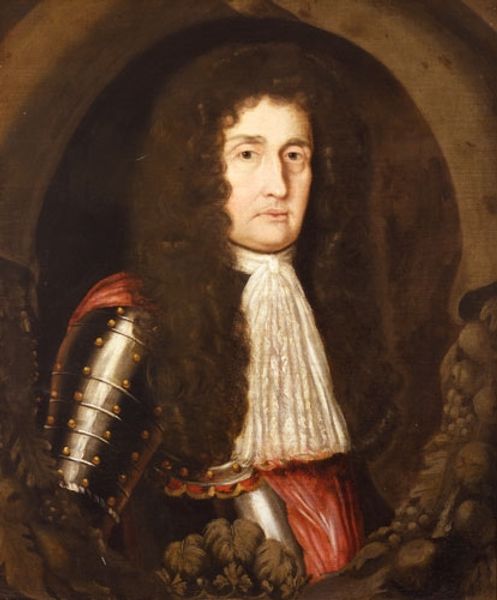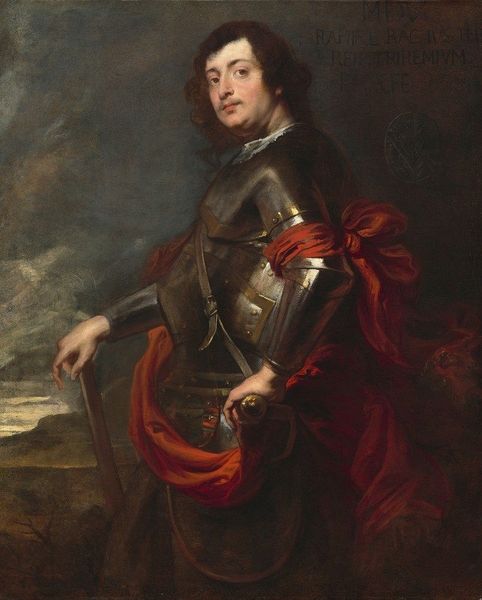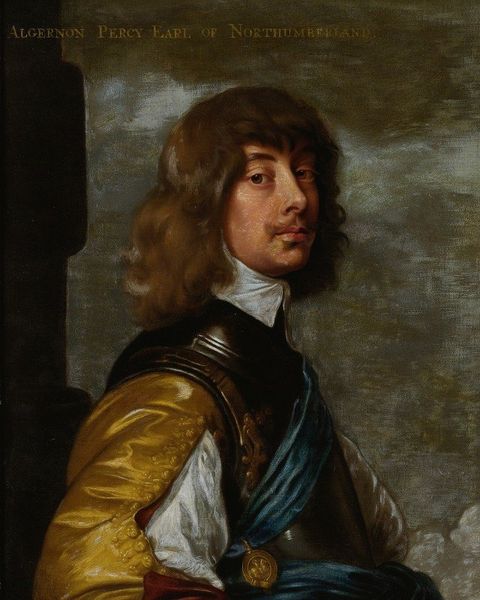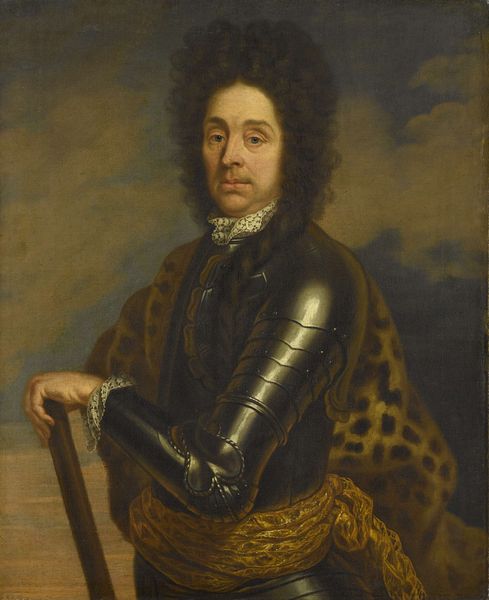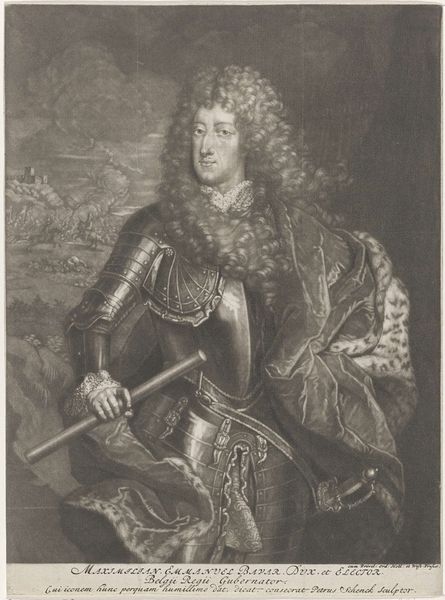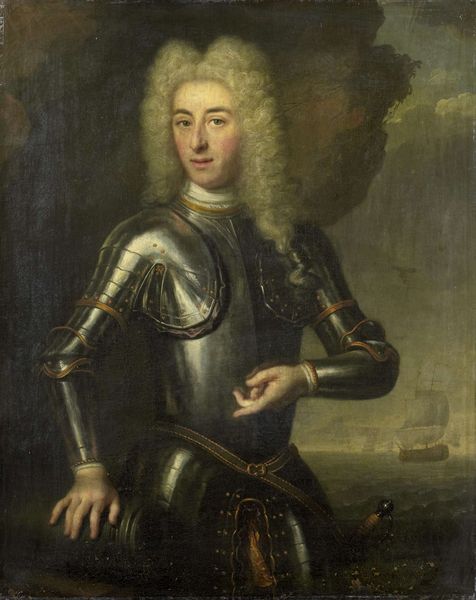
Portrait of Cornelis van Aerssen, Lord of Sommelsdijk, Governor of Suriname from 1683 c. 1680
0:00
0:00
oil-paint
#
portrait
#
baroque
#
oil-paint
#
oil painting
#
history-painting
Dimensions: height 121 cm, width 91 cm, depth 4.5 cm
Copyright: Rijks Museum: Open Domain
Editor: Here we have an oil painting, circa 1680, titled "Portrait of Cornelis van Aerssen, Lord of Sommelsdijk, Governor of Suriname from 1683". It looks like your typical Baroque portrait, but I’m struck by how much the sitter’s polished armor pops against what seems like a plain background. What’s your read on this portrait? Curator: The portrait gives an immediate impression of power and status, primarily conveyed through the rendering of material wealth and resources. The highly polished armor speaks to technological advancement, labor investment, and ultimately, control over both production and manpower. Editor: Control, how so? Curator: The act of painting itself—consider the sourcing and grinding of pigments, the labor required to prepare the canvas, the artistic skill in rendering those reflective surfaces. Then you factor in the context. Cornelis van Aerssen was Governor of Suriname, appointed by the Dutch West India Company. Can you see how that role influenced what's materially depicted here? Editor: Ah, right! The polished armor represents military might maintained by colonially derived wealth, perhaps? And I see the coat of arms up in the corner... a little like a company logo to reinforce his position of power? Curator: Precisely. The portrait functions as a material declaration of the subject's participation within that system, relying on exploited resources and labour in the colonies. What do you notice about the production quality of the painting? Editor: It looks skillfully executed, I guess. Curator: Note that level of artistry as part of that material system of production too; an advertisement as much as documentation, and complicit in its messaging of access and control. The very paint, the canvas – they speak of resources and skilled labour used to promote power. Editor: That makes sense. I'll never see a portrait the same way again, looking at how it participates in a global exchange. Curator: Exactly. Focusing on materials and the means of production shifts our understanding from simply admiring aesthetic skill, to unpacking the societal and economic factors that produce these kinds of images and the power structures they reinforce.
Comments
No comments
Be the first to comment and join the conversation on the ultimate creative platform.
